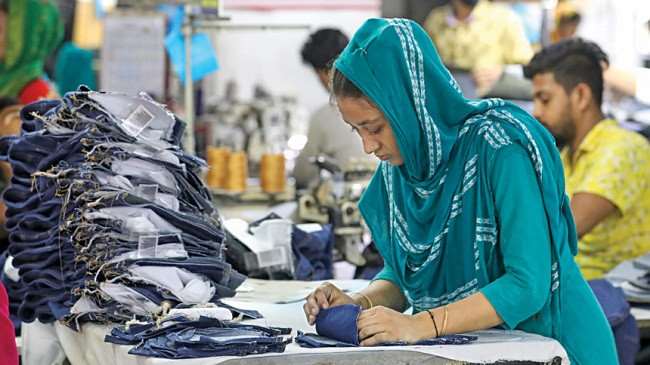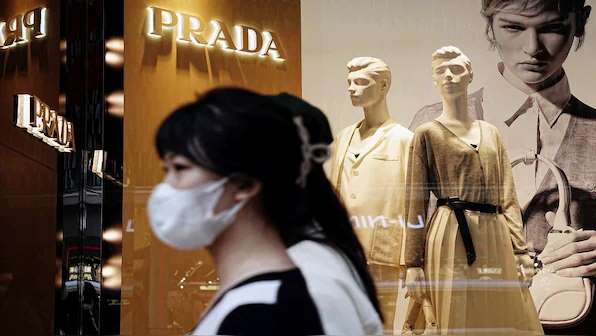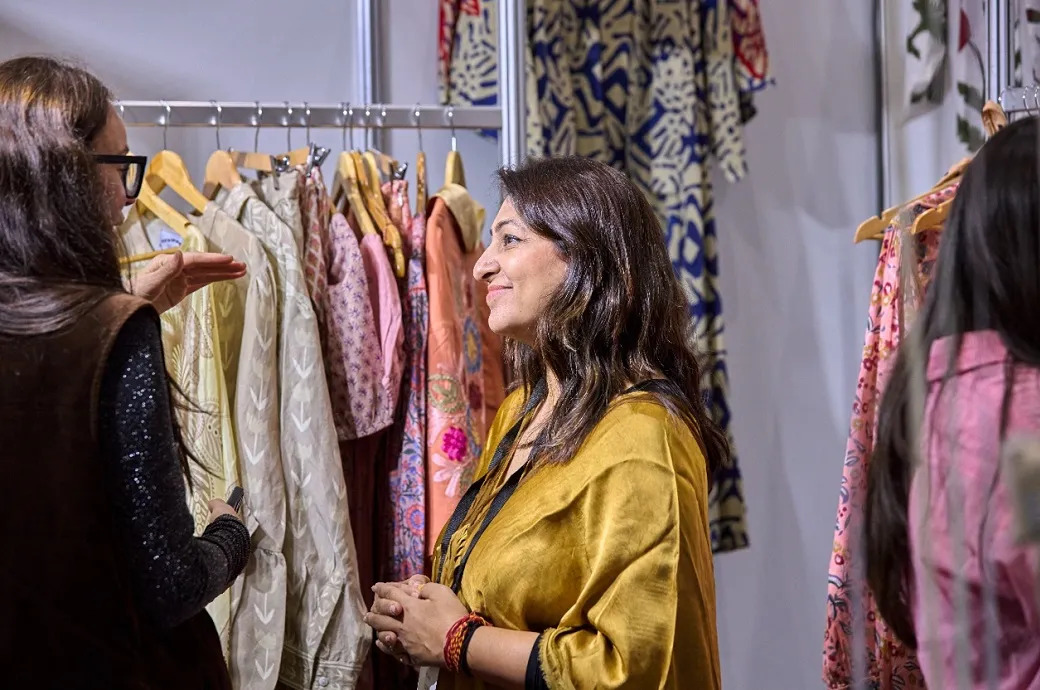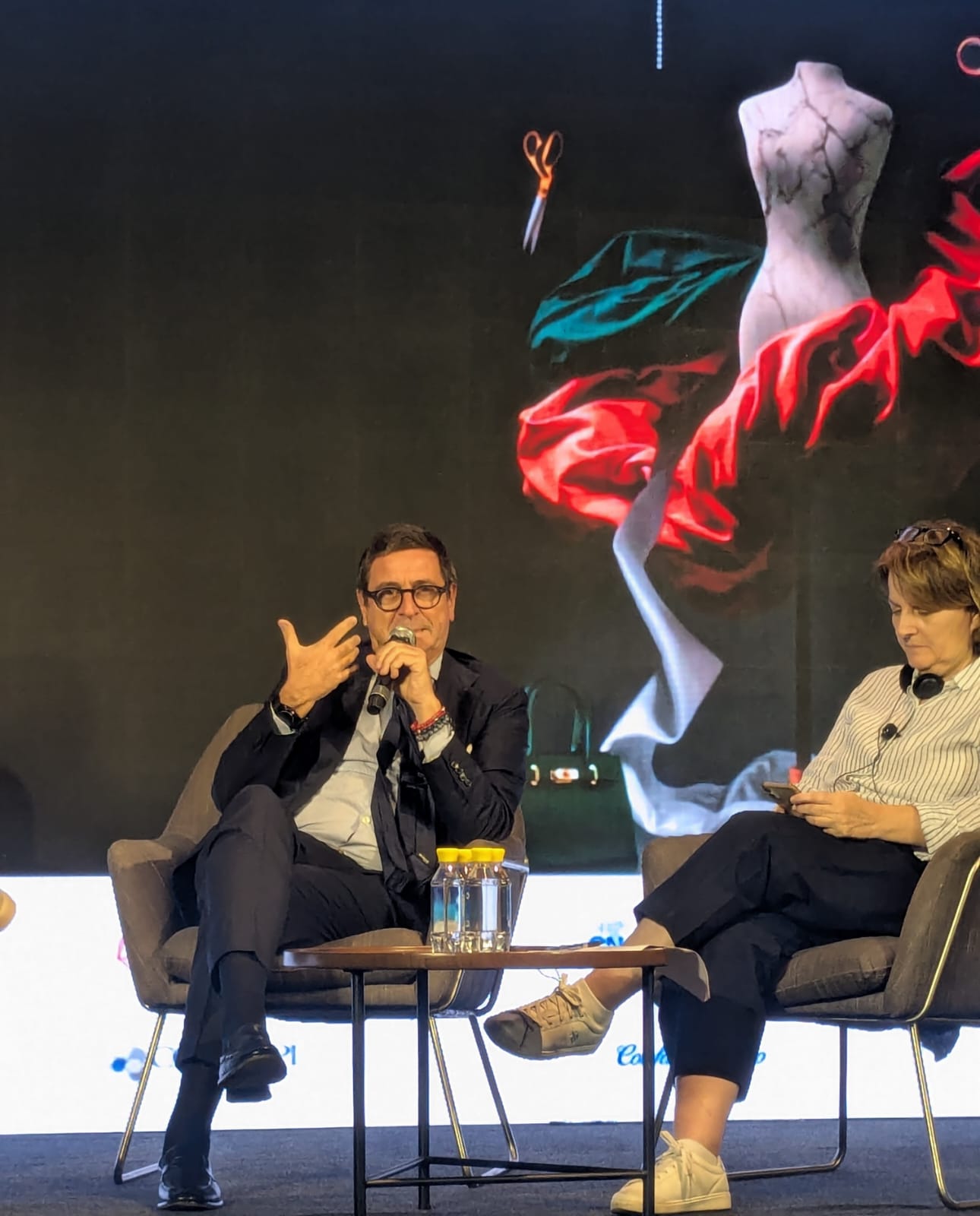FW
Nike, Inc announced its fiscal 2025 first-quarter results, revealing revenues of $11.6 billion, a 10 per cent decline from the previous year, with a 9 per cent decrease on a currency-neutral basis. Nike Direct revenues fell 13 per cent to $4.7 billion, while wholesale revenues decreased by 8 per cent to $6.4 billion.
Despite the revenue drop, gross margins improved by 120 basis points to 45 per cent, driven by reduced product costs and effective pricing strategies. However, diluted earnings per share fell 26 per cent to $0.70, with net income down 28 per cent to $1.1 billion.
The results were announced during a pivotal time for the company, as it prepares for the transition to new CEO Elliott Hill, effective October 14, 2024. Nike’s Board of Directors emphasized its commitment to addressing guidance during the upcoming conference call and noted the postponement of its Investor Day.
Matthew Friend, Executive Vice President and CFO, stated that Nike's first-quarter results largely aligned with expectations. He emphasized that achieving a comeback of this magnitude requires time, but noted early successes, highlighting momentum in key sports and an increased focus on innovation and new product offerings.
As of August 31, 2024, Nike's inventories totaled $8.3 billion, down 5 per cent from the prior year, while cash and equivalents increased to $10.3 billion. The company maintained its commitment to shareholder returns, distributing approximately $1.8 billion, including $558 million in dividends and $1.2 billion in share repurchases under its $18 billion buyback program.
NIKE continues to demonstrate resilience and strategic planning as it navigates its transition and aims for future growth.
The upcoming BRICS+ Fashion Summit in Moscow is set to be the largest event in the fashion sector, attracting delegations from over 30 African countries, including South Africa, Ethiopia, Egypt, and Nigeria. This summit, hosted by Russia, aims to create a unified platform for industry players from emerging markets to exchange ideas and experiences.
Stephen Manzini, Founder and CEO of Soweto Fashion Week, emphasizes the summit's significance as a historic opportunity for emerging economies to come together. He notes that collaboration among these markets could facilitate major trade agreements and prompt dominant economies to recognize trends originating from the global South.
Alongside the summit, South African brand Tshegofatso By Design will showcase its innovative collection at Moscow Fashion Week, featuring fresh interpretations of traditional African motifs.
The Business Program will explore key themes, including the role of fashion in economic development, cultural dialogue, decolonization of fashion, and export opportunities to BRICS+ nations. Esteemed lecturers from Russian and international fashion institutions will participate, while designers will present their work at the grand International Exhibition 'Heritage,' celebrating cultural traditions and craftsmanship.
The BRICS+ Fashion Summit is poised to become a pivotal event for the fashion industry, building on last year’s inaugural summit that saw collaboration among leaders from 60 countries. Participants will address the common challenges faced by fashion brands in emerging markets, advocating for greater diversity and the promotion of local brands that reflect their cultural heritage. This strategic initiative aims to enhance global fashion interactions and support new talents in the industry.

Bangladesh's recent political unrest, has tested the resilience of its garment industry, a cornerstone of the nation's economy. While some brands have shifted orders, a significant number, including major players like Adidas, H&M, and Inditex, have maintained their commitments to the country, highlighting the complex interplay of factors that influence sourcing decisions. This commitment to Bangladesh's garment industry comes as a relief to many, but challenges remain, and the long-term impact on the sector is yet to be fully understood.
Brands stay put, show their commitment
A recent survey by the Business and Human Rights Resource Centre (BHRRC) revealed 12 out of 20 global apparel buyers have not shifted their orders from Bangladesh despite the disruptions. These brands, including Adidas, ASDA, C&A, H&M, Inditex, Marks & Spencer, Next, Puma, PVH Corp, Tesco, Primark, and Walmart, have demonstrated a commitment to order stability, even in the face of challenges.
Several factors contribute to this steadfastness. Primarily, Bangladesh enjoys duty advantages with many countries and zones, making it a cost-competitive sourcing destination. For instance, the European Union's Everything But Arms (EBA) initiative grants duty-free access to Bangladeshi exports, excluding arms and ammunition. This preferential treatment has played a crucial role in attracting and retaining international brands.
In fact, C&A and Primark, two of the brands that maintained orders, have even offered financial and non-financial support to their suppliers in Bangladesh. C&A provided low-interest or no-interest financing and covered the cost of air shipments to mitigate delivery challenges. Primark extended production and delivery timelines, allowing suppliers to manage disruptions without facing penalties.
Challenges remain
However, the situation on the ground is not without challenges. While bigger brands have weathered the storm, smaller factories, particularly those reliant on orders from smaller buyers, have faced difficulties. The BHRRC's findings reveal that order placement has slowed down, potentially indicating a shift away from smaller factories. Additionally, airfare costs have soared, putting further strain on suppliers. Fazlee Shamim Ehsan, Executive President, Bangladesh Knitwear Manufacturers and Exporters Association (BKMEA), told the Financial Express that airfreight costs have skyrocketed from $2.50 per kg to $6.0-7.0 per kg. These increased costs are squeezing profit margins and creating further challenges for the industry.
The unrest has also had repercussions for workers, with reports of mandatory overtime, increased production targets, and delayed wage payments. Smaller factories, particularly vulnerable to order fluctuations, may struggle to recover from the disruptions. Some factories have struggled to pay wages on time, leading to worker agitation and demands for improved conditions.
The way forward
While Bangladesh's duty advantages have undoubtedly played a role in retaining brands, the country also needs to address underlying issues to ensure the long-term sustainability of its garment industry. This includes improving worker conditions, ensuring timely wage payments, and fostering a stable business environment.
The recent unrest serves as a reminder of the delicate balance between economic interests and social responsibilities. Brands, suppliers, and the government must work together to create a more resilient and equitable garment industry in Bangladesh, one that benefits both businesses and workers.

As the global fashion industry prepares to embrace greener practices, manufacturers in low-income countries are feeling the heat of the European Union's Corporate Sustainability Due Diligence Directive (CSDDD). The directive, aimed at making global supply chains more sustainable, has manufacturers worried about bearing the brunt of the cost and complexity.
The cost of going green
The financial implications of the CSDDD are significant. The fashion industry will need to invest over $1 trillion to transition to net-zero emissions. The Apparel Impact Institute (Aii) has created the Fashion Climate Fund to help suppliers with energy and water efficiency, but smaller producers might struggle to meet specific brand benchmarks.
Pressure on suppliers
These regulations, aimed at making global supply chains more sustainable, are expected to significantly impact garment factories and textile mills across Asia, which are often cited as major contributors to the industry's pollution.
Bangladesh, the world's second-largest clothing exporter, is particularly vulnerable, given its ongoing political transition and the economic challenges faced by its garment industry. Abdullah Hil Rakib, Managing Director, Team Group, a major Bangladeshi clothing supplier, stressed the need for support from both global buyers and the government to achieve a successful green transition.
For the fashion industry, this translates into a significant onus on factories in countries like Bangladesh, Pakistan, and Cambodia to address gaps in labor rights, human rights, and environmental protection. International brands will need to collaborate closely with these suppliers to meet the new requirements.
The CSDDD requires major European brands to ensure their suppliers are conducting due diligence to protect workers and communities from the adverse effects of their operations. Failure to comply could result in significant financial penalties. Industry associations and government agencies can encourage a collaborative approach between brands and suppliers. Bangladesh's garment makers' association, BGMEA, has taken the initiative by setting up the Responsible Business Hub and creating a platform for data collection and sharing.
Challenges and concerns
Financial burden: Manufacturers in developing countries often operate on thin margins and may struggle to finance the necessary investments in green technologies and practices.
Legal and regulatory complexities: The CSDDD will necessitate a raft of legal changes in producing countries, which could be a lengthy and complex process.
Capacity building: Smaller producers may lack the knowledge and resources to understand and implement the necessary changes.
Worker protection: The directive also aims to improve labor conditions, but ensuring effective implementation and enforcement remains a concern.
Meanwhile union leaders in Bangladesh are awaiting the implementation of the CSDDD to assess its impact on workers. They are demanding clear channels for addressing grievances and upskilling programs for workers. Kalpona Akter, executive director of the Bangladesh Center for Workers Solidarity, also highlights the need for support in dealing with climate impacts like flooding and heat.
Despite the challenges, the CSDDD also presents an opportunity for manufacturers to push for ethical commercial practices and more favorable contracts from international brands. Bangladesh, with its experience in improving worker safety and environmental standards, sees the directive as a way to maintain its position as a key sourcing choice.

China, once a seemingly insatiable consumer of luxury goods, is experiencing a change in its relationship with high-end brands. Interest in high-end Western labels like Burberry, Prada, and Louis Vuitton is waning, replaced by a burgeoning interest in ‘pingti’ o domestically produced ‘dupes’ that are replicas that offer comparable quality at a fraction of the price. Economic headwinds, evolving consumer values, and the rise of high-quality dupes are reshaping the luxury market in unexpected ways. This is leaving international brands scrambling to adapt while domestic players and pingti producers seize the opportunity.
The rise of pingti
While concrete figures for the pingti market remain elusive due to its nascent nature, anecdotal evidence and expert opinions point to explosive growth. Social media searches for dupes have tripled from 2022 to 2024, according to Laurel Gu, a market research analyst. This is primarily being driven by factors like the economic slowdown in China.
Table: The rise of pingti
|
Metric |
2022 |
2023 |
2024 (Projected) |
|
Social Media Searches for "Dupes" |
1x |
3x |
5x+ |
|
Youth Unemployment Rate |
16.70% |
18.80% |
20%+ |
|
Luxury Market Growth |
10% |
5% |
2-3% |
The data paints a clear picture: as economic pressures mount and youth unemployment soars, Chinese consumers, especially Gen Z, are becoming more price-sensitive and discerning. They are actively seeking value and questioning the traditional association of luxury with exorbitant price tags.
And this shift in consumer behavior has dealt a blow to international luxury brands. Burberry reported a 21 per cent year-over-year sales decline in the previous quarter, while Swatch cited a sharp drop in demand in China and Southeast Asia. Even luxury giants like LVMH have experienced a slowdown in growth.
Table: Luxury brands sales drop
|
Brand |
Sales change (year-on-year) |
|
Burberry |
-21% |
|
Richemont |
-10% |
|
Hugo Boss |
-8% |
|
LVMH |
+5% |
These figures highlight the challenges faced by international brands. Many have resorted to offering discounts and promotions, but even these efforts are proving insufficient to stem the tide. A recent Fortune report revealed that several brands are grappling with high return rates and purchase cancellations.
While international brands struggle, domestic players and pingti producers are capitalizing on the changing landscape. Domestic brands like Chando in skincare are offering comparable products at lower prices, resonating with value-conscious consumers. Pingti producers, meanwhile, are attracting buyers with near-perfect replicas of luxury goods, often using the same suppliers and materials as the original brands.
Emerging trends
Economic slowdown: China's economic downturn is a major factor. Rising unemployment, particularly among young people, and wage stagnation are forcing consumers to reconsider luxury spending.
Luxury shaming: A reluctance to flaunt expensive items in a time of economic uncertainty is contributing to a decline in conspicuous consumption.
Shifting values: Consumers are prioritizing value and functionality over brand names and status symbols. This is due to increased awareness of quality dupes or pingti that offer comparable quality at a fraction of the price.
Rise of domestic brands: Chinese consumers are increasingly supporting homegrown brands that offer high quality and competitive pricing.
E-commerce and social media: Online platforms are facilitating the discovery and purchase of pingti brands, further driving their popularity.
Therefore, the future of the luxury market in China hinges on several factors. Will the economic slowdown persist, further boosting the pingti trend? Will international brands successfully adapt their strategies to cater to the evolving Chinese consumer? Will domestic brands continue to gain market share?
The answers to these questions remain uncertain. However, one thing is clear: the luxury market in China is undergoing a profound transformation. Brands that can understand and respond to the new consumer values of quality, value, and authenticity will be best positioned to succeed in this evolving market.
The fashion division of the global trade show organiser, GL Events plans to organise the first Canadian edition of the textile supply chain event, Première Vision from Apr 22-23, 2025. To be held at the Grand Quai in Montreal, this new event will connect local manufacturers with global fashion brands, with approximately 100 exhibitors, mainly from Canada, expected to attend it.
The show’s launch in Canada marks an expansion of Première Vision's presence in North America, complementing its established events in New York, which take place in January and July. Première Vision Montreal will specifically cater to the needs of Canadian fashion brands, with a focus on products that meet the country’s climate demands, such as knitwear and outerwear.
According to Florence Rousson, Head-Première Vision, the Canadian edition will not only supplement the New York shows but also offer a unique value proposition tailored to the local market.
Through its diverse portfolio of events, GL Events plans to unite the global fashion ecosystem under one roof. According to Rousson, the organiser aims to foster connections between different segments of the fashion industry, from production to retail, without diluting the individual identities of the events. The company envisions creating synergies between shows in different regions, such as combining Denim Première Vision with Tranoï in Tokyo.
The February and September editions of Première Vision Paris will focus on distinct themes with the company strengthening partnerships with fashion schools to enhance its role in training and skill development within the industry.
Launched in 2018, the Première Vision B2B marketplace will be discontinued. Instead, data collected from the platform will be integrated into three key tools: the mobile app for matchmaking and networking, the website for company information, and Première Vision magazine. These resources will continue to support business connections before, during, and after the physical shows.
In the coming months, Première Vision will hold the Denim industry show in Milan on Dec 04-05, 2024 followed by Blossom Première Vision in Paris on Dec 11-12, 2024. Première Vision New York will be held on Jan 14-15, 2025, and Première Vision Paris is scheduled for Feb 11-13, 2025. Prior to these events, GL Events will organise the Tranoï designer show in Paris from Sep 26-29, 2024.
The 63rd edition of Filo is scheduled to be held from Feb 26-27, 2025 at the FieraMilanoCity Viale Scarampo in Milan.
The 62nd edition of the international yarn and fiber exhibition was held successfully from Sep 18-19, 2024 in Milan. Generating positive responses from both exhibitors and buyers, the event showcased high-value collections that highlighted the innovative capabilities and sustainability efforts of both Italian and international textile manufacturers. The continuous flow of buyers throughout the two-day fair reflected the strong interest in these cutting-edge products.
One of the striking features of the 62nd edition was a significant increase in foreign visitors, a testament to Filo’s global reach and appeal. This achievement was partly due to the ongoing partnerships with ICE-Agency and Regione Piemonte-Ceipimonte, which played a crucial role in drawing international buyers to the event.
Paolo Monfermoso, Head, Filo, notes, despite a challenging period marked by a slowdown in international markets, the 62nd edition of Filo reaffirmed its status as a key reference point for the industry. The event one again validated the belief any crisis can be overcome through hard work, innovation and production enhancement.
In anticipation of the World Cotton Day on Oct 7, UK-based sustainable cotton organisation, CottonConnect and the Cotton Egypt Association (CEA) have teamed up to raise awareness about and expand the scope of regenerative cotton practices in Egypt.
The two organisations have signed an MoU to advance regenerative cotton farming by supporting CottonConnect’s REEL Regenerative Program. The initiative aims to build more resilient cotton supply chains and improve the livelihoods of farmers in the face of climate change.
As a non-profit dedicated to protecting and promoting the Egypt’s Cotton identity, CEA will assist CottonConnect in scaling the REEL Cotton Program which has already demonstrated a tangible impact in Egypt. Participating farmers have reported a 15 per cent -30 per cent reduction in water and chemical usage, a 15 per cent increase in yield, and a 30 per cent boost in profits.
This collaboration is seen as a critical response to the country’s ongoing challenges with climate change, given that Egypt is projected to be classified as ‘water scarce’ by 2025 by the United Nations, By adopting regenerative farming techniques, CottonConnect and CEA aim to help farmers adapt to and mitigate the worst effects of these environmental pressures.
This partnership also aligns with the theme of World Cotton Day: ‘Cotton for Good’. Both organisations are committed to advancing sustainable cotton farming practices that support environmental resilience while enhancing the livelihoods of cotton farmers across Egypt.
During the International Cotton Advisory Committee Plenary Meeting, the Private Sector Advisory Council (PSAC) hosted its Fifth Open Session, titled ‘Traceability and Sustainability Requirements in Natural vs Man-made Fibers.’
Peter Wakefield, Chair of PSAC and Wakefield Inspection, introduced four speakers to discuss key topics related to cotton’s sustainability and traceability. Anees Khawaja from MG Apparel emphasized the need to focus on cotton’s biodegradability and role in providing jobs, contrasting it with synthetic fibers, which lack these benefits.
Marc Lewkowitz of Supima, representing the Producers and Ginners Committee, proposed three recommendations for cotton traceability: defining a common traceability standard, developing a streamlined bale ID system, and supporting a gradual transition to global traceability implementation.
Eimear McDonagh from Agri Direct Australia highlighted that cotton faces stricter standards than other fibers and stressed the importance of working with governments and brands for future success.
Debra Guo of Textile Exchange discussed ‘preferred materials,’ advocating for fibers that reduce environmental impacts and promote sustainability through improved production systems.
The session underscored the growing importance of sustainability and traceability in the global cotton industry.
Adjusting its full-year revenue expectations to the lower end of its previous forecast, Levi Strauss & Co has raised concerns about stagnating demand for its apparel. The company has lowered its expectations for net revenue growth for the current fiscal to 1 per cent as against the earlier estimate of 1 per cent to 3 per cent.
In Q3 FY25 that ended on Aug 25, the company’s sales fell slightly below analysts’ expectations. Notably, revenues for the Americas division of Levi’s experienced a decline. The
Levi’s has been focusing on increasing sales through its own channels, including its stores, website, and app, as shoppers shift away from department stores, which have traditionally been key for large apparel brands. While Levi's direct-to-consumer efforts showed progress with 10 per cent growth, its wholesale business declined by 6 per cent compared to the same quarter last year.
The company is also reviewing strategic options for its Dockers brand, which could include a potential sale. Sales of the brand fell by 15 per cent during the latest quarter, generating $73.7 million in revenue. Levi’s has hired Bank of America as a financial adviser for this process.
Despite these challenges, the company’s namesake brand is gaining momentum, emphasised Michelle Gass, CEO emphasised highlighting the strength of its direct-to-consumer segment.












